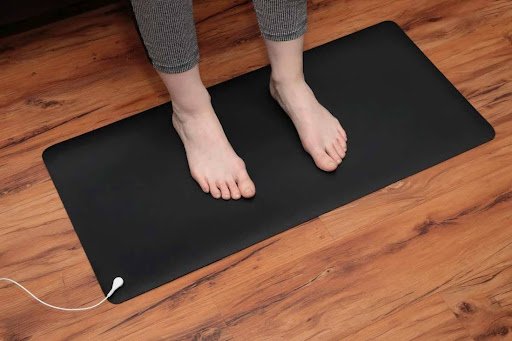
Moving homes is often a stressful endeavour, and adding the unpredictable weather of the monsoon season to the mix can feel downright daunting. Heavy rains, slippery roads, and unexpected delays can complicate the process. However, with careful planning and the right strategies, you can navigate these challenges smoothly.
This guide offers practical tips to help you make your monsoon move as hassle-free as possible and ensure your belongings stay safe and dry throughout the journey.
1. Plan Ahead and Monitor Weather Forecasts
The first step in preparing for a monsoon move is staying informed about the weather. Regularly check forecasts leading up to your moving day. If severe weather is predicted, consider adjusting your schedule. Flexibility can save you from moving during the worst conditions. Maintain open communication with your moving company to stay aligned on any necessary changes. They might offer insights or alternative plans to accommodate the weather.
2. Use Waterproof Packing Materials
Protecting your belongings from moisture is crucial. Opt for sealed plastic containers instead of traditional cardboard boxes, as they offer better resistance to water. Wrap delicate items in plastic sheets or bubble wrap before placing them in containers. Don’t forget to seal all boxes with heavy-duty, waterproof packing tape. This extra layer of protection can prevent water from seeping in and damaging your items.
3. Protect Your Flooring
Moving during the monsoon increases the chances of tracking mud and water into your old and new homes. To prevent damage, lay down protective coverings like tarps or old blankets on floors. Place doormats at all entrances to minimise slippery surfaces and keep interiors clean. Encourage everyone involved in the move to wipe or remove their shoes when entering. These small steps can preserve the condition of your flooring and reduce post-move cleaning.
4. Secure Professional Moving Services
Hiring experienced movers can make a significant difference during a monsoon move. Professionals like Butler’s Removals & Storage have the expertise to handle wet conditions effectively. They use enclosed trucks to shield your belongings from rain and have equipment designed for such weather.
Additionally, verify that the moving company offers insurance coverage. This provides peace of mind, knowing you’re protected against unforeseen damages. You can check them out at butlersremovals.com.au.
5. Pack an Accessible Emergency Kit
An emergency kit is essential when moving, especially during the monsoon. Pack important documents, medications, chargers, and a change of clothes in a waterproof bag that stays with you. Include basic first-aid supplies for minor injuries. Having these items on hand ensures you’re prepared for delays or emergencies, and you won’t have to rummage through boxes to find necessities.
6. Dress Appropriately for the Weather
Wearing the right attire can keep you comfortable and safe. Equip yourself with waterproof jackets and have umbrellas readily available. Choose non-slip, waterproof shoes to prevent accidents on wet surfaces. Dressing in layers allows you to adjust to changing temperatures throughout the day. Proper clothing can make the moving process more bearable under rainy conditions.
7. Ensure Utilities are Set Up in Advance
Before moving into your new home, confirm that all utilities—electricity, water, gas—are activated. The last thing you want is to arrive and find you can’t turn on the lights or have no running water. Additionally, inspect the property for leaks or water damage beforehand. Ensuring all electrical outlets and appliances are safe to use is also vital for your safety.
8. Protect Electronics and Fragile Items
Electronics and fragile items require extra care during a monsoon move. Use additional cushioning materials like foam or bubble wrap to safeguard them. Place electronics in waterproof bags or wrap them securely to prevent moisture ingress. Clearly, label boxes containing fragile items with “Fragile” and “This Side Up” to guide movers in handling them properly.
9. Schedule Your Move Wisely
Timing can greatly influence the success of your move. If possible, plan to move during daylight hours when visibility is better, and rain is less likely. Avoid peak traffic times, as monsoon rains often exacerbate congestion. Allow extra time for potential delays due to weather conditions. A well-planned schedule can reduce stress and keep the move on track.
10. Stay Flexible and Patient
Finally, embrace flexibility. Weather can be unpredictable, and unforeseen challenges may arise. Maintain open communication with all parties involved, including family members and movers. A positive attitude and patience can go a long way in making the process smoother. Remember, it’s okay if everything doesn’t go exactly as planned; what’s important is adapting and moving forward.
Conclusion
Moving during the monsoon season presents unique challenges, but it doesn’t have to be overwhelming. By implementing these practical tips, you can protect your belongings and ensure a smoother transition to your new home. Professional assistance plays a crucial role in this process. Companies like Butler’s Removals & Storage are equipped to handle the intricacies of monsoon moves, providing expertise and resources that make a significant difference.
If you’re planning a local or interstate move this monsoon season and want to ensure it’s as stress-free as possible, consider reaching out to experienced professionals. Their knowledge and support can turn a potentially chaotic experience into a manageable one.








